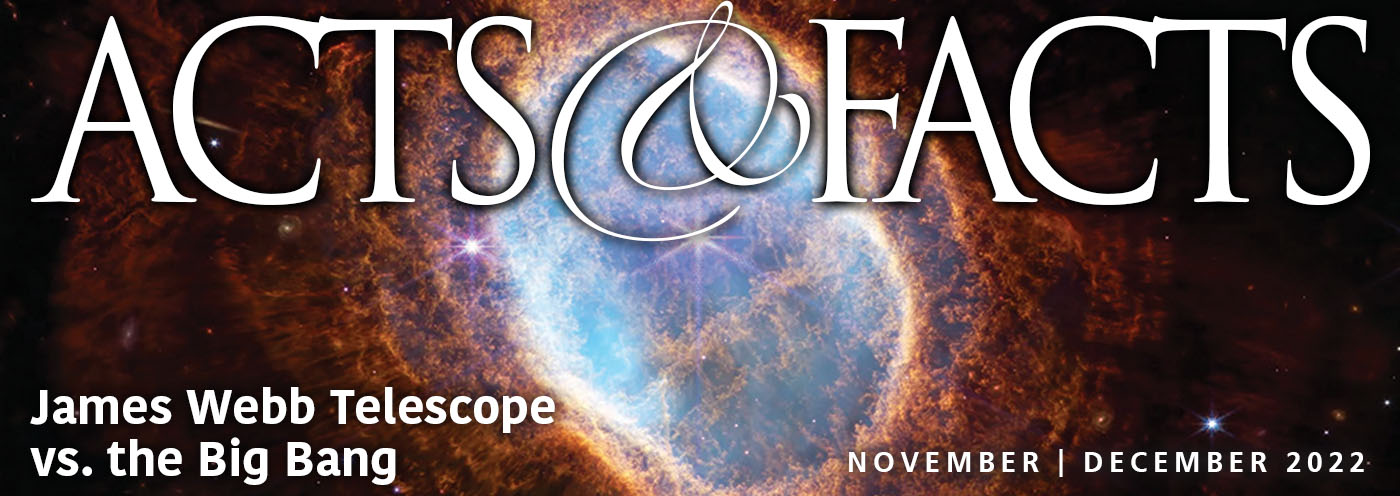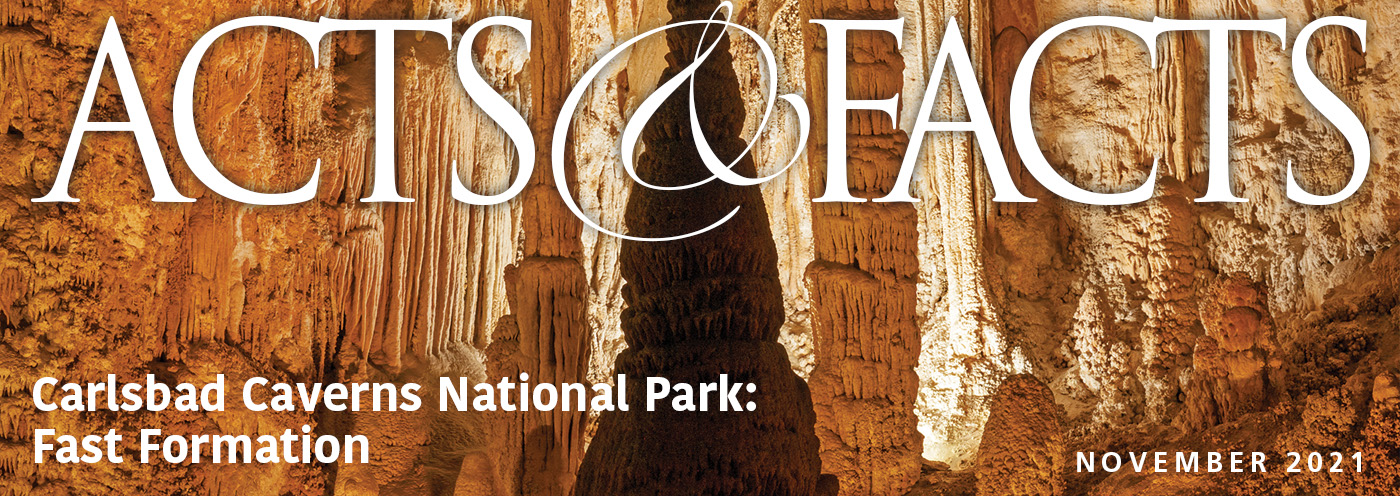In a new paper, scientists have announced the discovery of an enormous region of lower-than-average galaxy density about three billion light-years from Earth.1,2 This "supervoid," the largest single structure ever discovered at 1.8 billion light-years across, is newsworthy in its own right. However, it also has implications for the Big Bang model of the universe's origin.
This supervoid may partially explain the existence of an anomalous "cold spot" in the sky whose existence has long been problematic for the Big Bang model. However, at best it only replaces one Big Bang problem with another. In order to understand why, let's review some Big Bang basics.
Big Bang proponents consider the cosmic microwave background (CMB) radiation that comes to us from all directions in space to be a very strong argument for the Big Bang. They interpret the CMB as an "afterglow" from about 400,000 years after the supposed Big Bang event. Ironically, the CMB actually presents serious problems for the Big Bang model. One of the model's foundational assumptions is the so-called "cosmological principle," which includes the conditions of homogeneity and isotropy. Homogeneity assumes that, on average, matter and energy are uniformly distributed in space. Likewise, isotropy assumes that, on the largest scales, there are no special directions in space—one direction in space should be the same as any other direction in space. These two assumptions were built into the Big Bang model long before astronomers obtained high-quality observational data that would confirm or refute the assumptions. Furthermore, these assumptions are foundational to the model, built into its framework at the earliest stages of its formulation.
Although it might be possible to construct other Big Bang models which do not make these assumptions, this task would be an enormous "headache" for Big Bang advocates, as doing so would be a tacit admission that nearly all their calculations up to this point are wrong. Acknowledging error would require them to re-do these calculations, basically starting over from scratch!
Since the Big Bang demands an isotropic universe, the CMB should also be isotropic—CMB radiation from one direction in the sky should be nearly the same as CMB radiation coming to us from any other direction in the sky. And yet Big Bang advocates eventually realized that physics and probability considerations indicated that this should not be the case! So in order to enforce isotropy, Big Bang advocates invoked "inflation," a hyper-accelerated expansion that supposedly occurred very early in the universe's history.3
However, measurements of the CMB have revealed the existence of a large anomalous "cold" spot in one part of the sky. This means that one part of the sky is different from the rest of the sky, which violates isotropy. Likewise, it's also difficult to reconcile the cold spot with inflation, as acknowledged by respected Cambridge astrophysicist George Efstathiou.4
According to the scientists who made the discovery, this newfound supervoid can partially explain the cold spot's existence, as the two are aligned along our line-of-sight. But it can only explain about ten percent of the cold spot's temperature drop.2 So this problem for the Big Bang is still largely unresolved.
But even if this supervoid could completely explain the cold spot, this merely replaces one Big Bang problem with another one. Remember that the Big Bang also assumes homogeneity—that matter and energy are uniformly distributed in space. This means that enormous structures like this supervoid should be extremely rare, if they should exist at all. In fact, one of the paper's authors claims that there should be only a few supervoids this large in the entire observable universe.2 But this claim, which is based on Big Bang expectations, raises a question: if one assumes that the Big Bang assumption of homogeneity is correct, what then are the odds, given the enormity of the visible universe, that one of these "rare" structures would just happen to be located so close to us, a mere three billion light-years from Earth? This is not the first instance of a possible challenge to the Big Bang's cosmological principle.5
Despite the fact that some Christians try to claim that God used the Big Bang to create the universe, all Christians should reject it because it is clearly unbiblical, not to mention riddled with serious scientific difficulties.
References
- Szapudi, I., et al. 2015. Detection of a supervoid aligned with the cold spot of the cosmic microwave background. Monthly Notices of the Royal Astronomical Society. 450 (1): 288-294.
- Devlin, H. Astronomers discover largest known structure in the universe is . . . a big hole. The Guardian. Posted on theguardian.com April 20, 2015, accessed online April 22, 2015.
- Lisle, J. 2003. Light-travel time: a problem for the Big Bang. Creation. 25 (4): 48-49.
- Discoveries from Planck may mean rethinking how the universe began. Phys.org. Posted on phys.org July 26, 2013, accessed April 22, 2015.
- Wall, M. Largest Structure in Universe Discovered. Space.com. Posted on space.com on January 11, 2013, accessed April 22, 2015.
Image credit: Copyright © 2015 ESA and the Planck Collaboration. Adapted for use in accordance with federal copyright (fair use doctrine) law. Usage by ICR does not imply endorsement of copyright holder.
*Dr. Hebert is Research Associate at the Institute for Creation Research and received his Ph.D. in Physics from the University of Texas at Dallas.
Article posted May 7, 2015.







